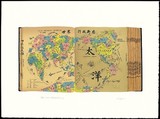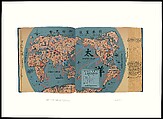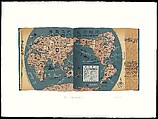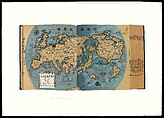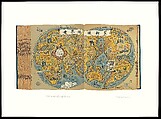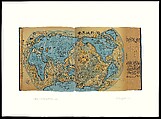Returned to lender The Met accepts temporary loans of art both for short-term exhibitions and for long-term display in its galleries.
Selected Scriptures
Hong Hao Chinese
Not on view
Selected Scriptures is a series of thirty-seven prints encompassing maps, martial strategy, sacred cave temples, and the human body. Conceived to imitate pages from a traditional woodblock-printed book, the work challenges our notions of common knowledge. The artist has sought to compile a new “encyclopedia” to put forward his own understanding of the ever-changing world, reshuffling various aspects of culture to effectively dissolve boundaries and meanings, just like a computer virus. Hong’s images resemble ancient classics, but are rife with intentional text errors, misnomers, and cartographic misrepresentations that offer a humorous commentary on the diverse and subjective ways in which the world is visualized and understood.
世界行政新图 新图
In New Political World (1995) Hong has rearranged both the locations and shapes of countries and cities.
世界防御设置要图
In World Defense Layout Map (1995) Hong correctly identifies the continents but fills these landmasses with weaponry, armed figures, and victims of torture and rape.
最新实用世界地图
In Latest Practical World Map (1995) continents, oceans, and cities are given names that describe temporary and psychological states.
世界测绘新图
In New World Survey Map (1995) countries are represented according to their international status and influence.
世界地域新览
In New World Geomorphic Map (1996) the continents have been enlarged relative to the oceans.
世界地形图
In Physical World (1999) Hong transposes sea and land.
This image cannot be enlarged, viewed at full screen, or downloaded.
This artwork is meant to be viewed from right to left. Scroll left to view more.
